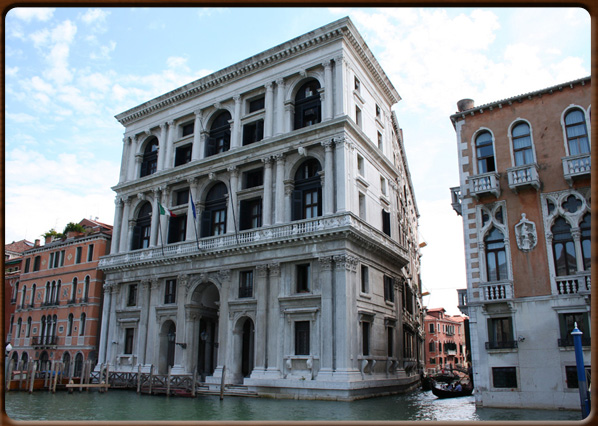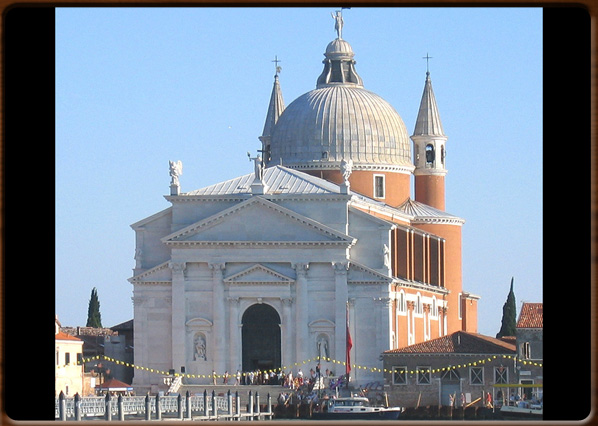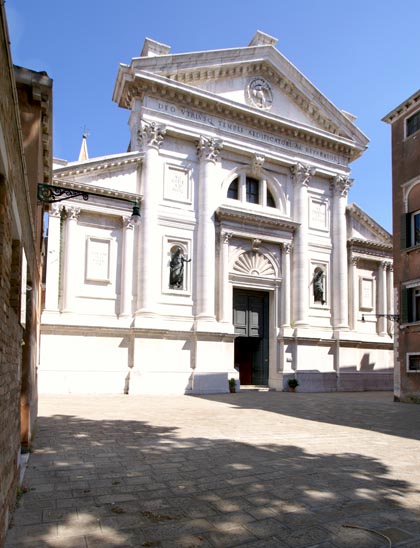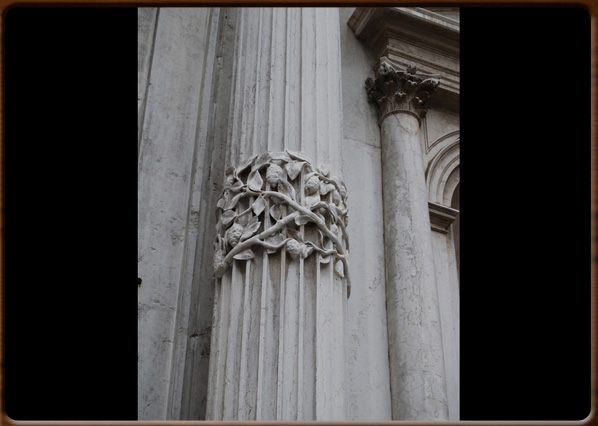
Palace Grimani.

Chiesa del Redentore (Church of the Redeemer)

Church of San Francesco della Vigna.

Fluted column, Scuola Grande di San Rocco




No video
Houses in the Renaissance were often built in sandstone rather than the more traditional Venetian brick. The new style was inspired by Classical Greek and Roman architecture, with their harmonic proportions and symmetry. The new decorative language adopted the motifs popular in ancient Greece and Rome, with grooved columns, Corinthian columns and semi-circular arches.
However, the Renaissance style in Venice was more complex and therefore less “pure” than that found in Florence and Rome. At the end of the 1400s, expensive stone cladding was introduced in the palaces, copying thirteenth-century models.
Then, in the 1500s, a typical form was established with columns and cladding in natural stone or simply painted. Painting of the façades was extremely important for the image of the city. Unfortunately, almost none of the formerly rich painted Venetian façades have survived.
A classic example of Venetian Renaissance architecture is Palazzo Grimani, with its solid appearance, not surprisingly supported by strong foundations. Here the façade is characterised by a large portal, typical of the Renaissance period, with a central semicircular arch and flanked by narrower side entrances. This combination is repeated in the round arch windows, with theatrical masks as the keystones. Palazzo Grimani is decorated not just by these masks (having a structural function), but also by many sculptures, a mark of distinction given that only the richest families could afford.
Other typical features of Renaissance architecture are projecting cornices and Corinthian columns, such as those at the sides of the entrance to the church of San Giovanni Evangelista in the sestiere of San Polo.
1300 - 1400 - - rev. 0.1.5